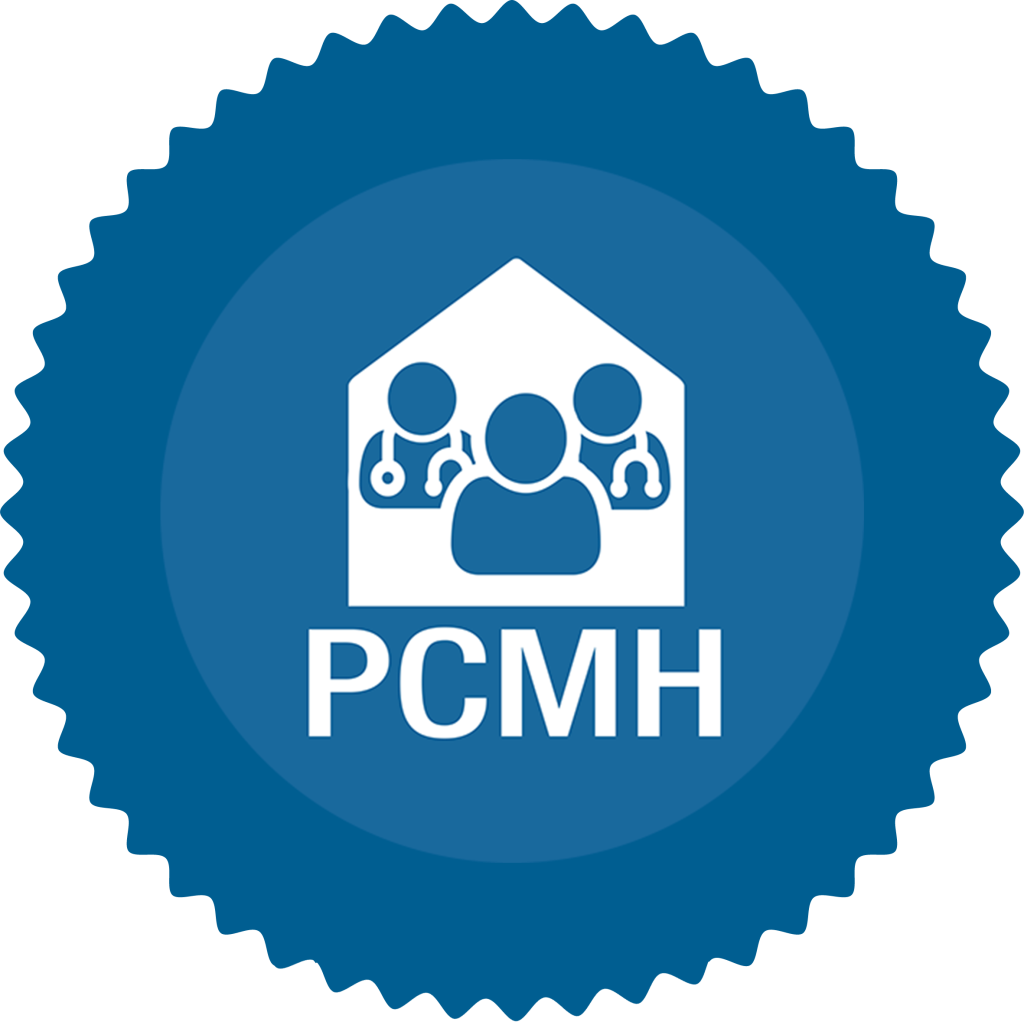As someone with major depression and generalized anxiety disorder, I feel like I have been on a lifelong quest to take better care of myself. I have heard the term “self-care” casually tossed around for years and, until recently, it was pretty elusive for me.
While I knew that I needed — and wanted — to be more compassionate toward myself, I wasn’t sure how to actually start making positive changes. When I was in the midst of a deep depression or a gripping anxiety attack, the last thing I felt capable of was a major lifestyle overhaul. I wish someone had handed me a how-to manual on being kind to myself, because I didn’t know where to begin.
1. I start from where I am
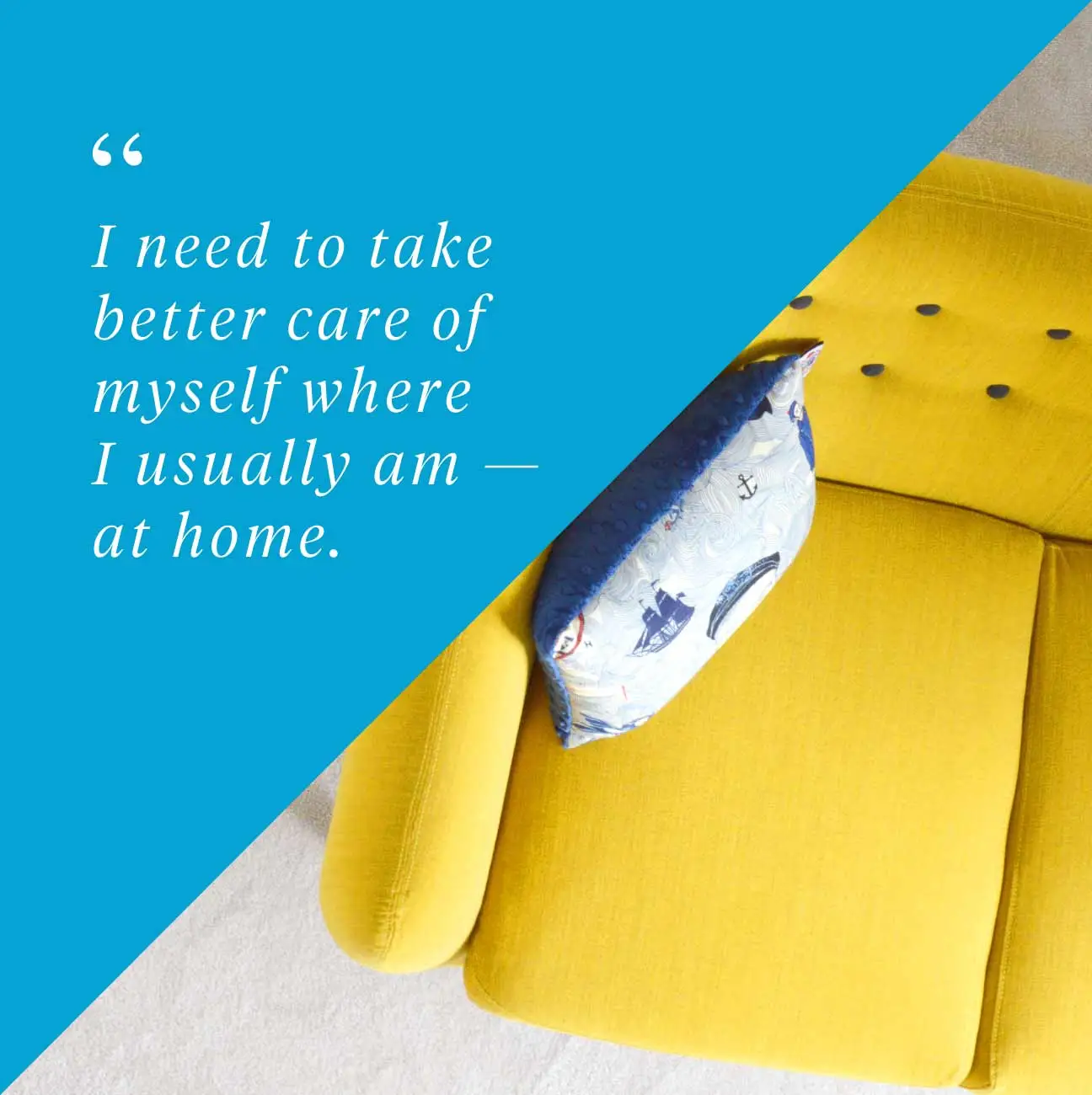
Self-care isn’t all fancy spas or relaxing vacations. While I love getting massages or walking by the ocean, in reality I need to take better care of myself where I usually am — at home, in the car, at work, or out with family and friends. As frustrating as it can be, mental illness is part of my life, so I needed to develop coping skills that I could use throughout the day. Making this perspective shift — from looking outside for self-care to also looking inside —helped me cultivate skills and self-awareness that I can use to cope with depression and anxiety in my everyday surroundings.
2. I stay tuned in to my body
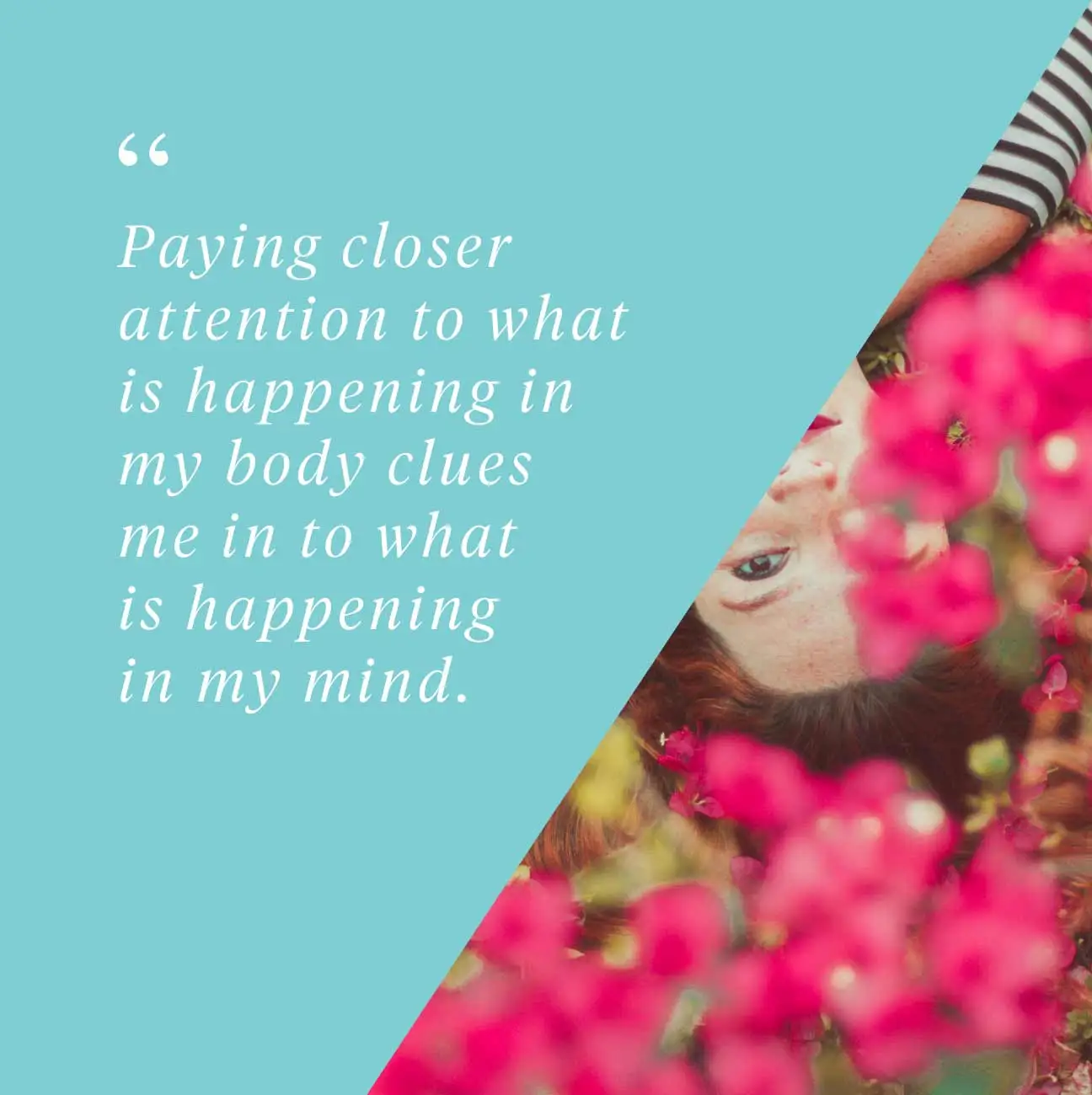
Mental illness doesn’t impact the mind alone: It’s physical, too. Depression decreases my energy. I feel exhausted and have frequent headaches. Anxiety, on the other hand, speeds me up. My heart races, I sweat more, and I feel an almost uncontrollable energy. For me, self-care starts with noticing how I feel, both physically and emotionally. Paying closer attention to what is happening in my body clues me in to what is happening in my mind. If I start to feel a persistent heaviness on my chest or a knot in my stomach, it’s an indication that I need to pay closer attention to myself. Noticing symptoms early helps me practice better care and often prevents my moment of anxiety or depression from turning into a full-blown episode.
3. I breathe deeply, all day every day
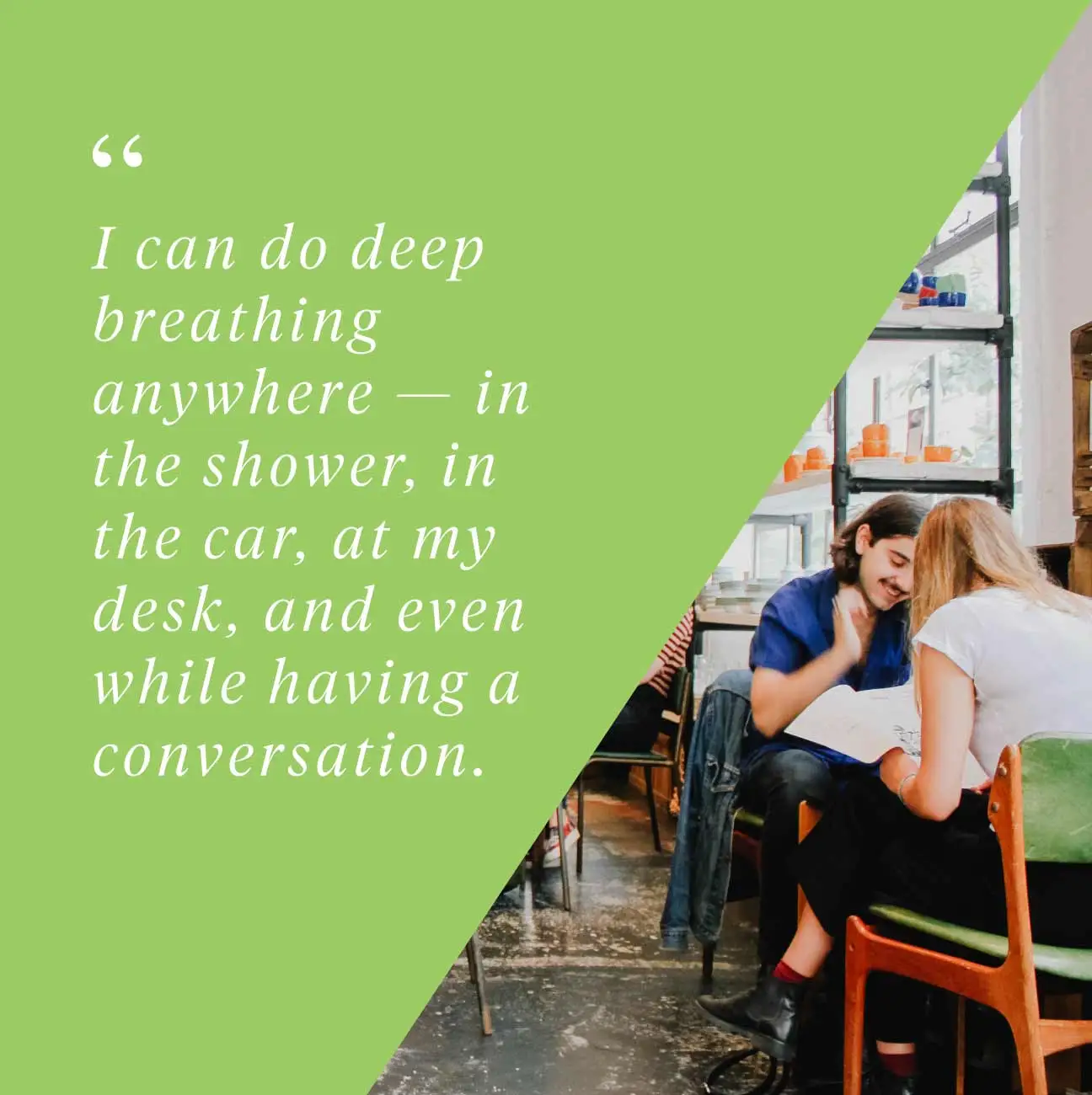
When my anxiety starts to build, my breathing becomes rapid and shallow. I feel physical tension, especially in my shoulders and jaw. Taking a series of deep breaths helps me to pause and step outside of my racing thoughts. Inhaling and exhaling gives me an emotional release, and it also helps me physically. Deep breathing increases circulation, releases endorphins, and relaxes muscles. I do my breath work throughout the day, not just when I start to feel anxious or depressed. What I love about deep breathing is that I can do it anywhere — in the shower, in the car, at my desk, and even while having a conversation. I can give myself a 10-second break, no matter what I am doing.
4. I am changing how I look at myself in the mirror
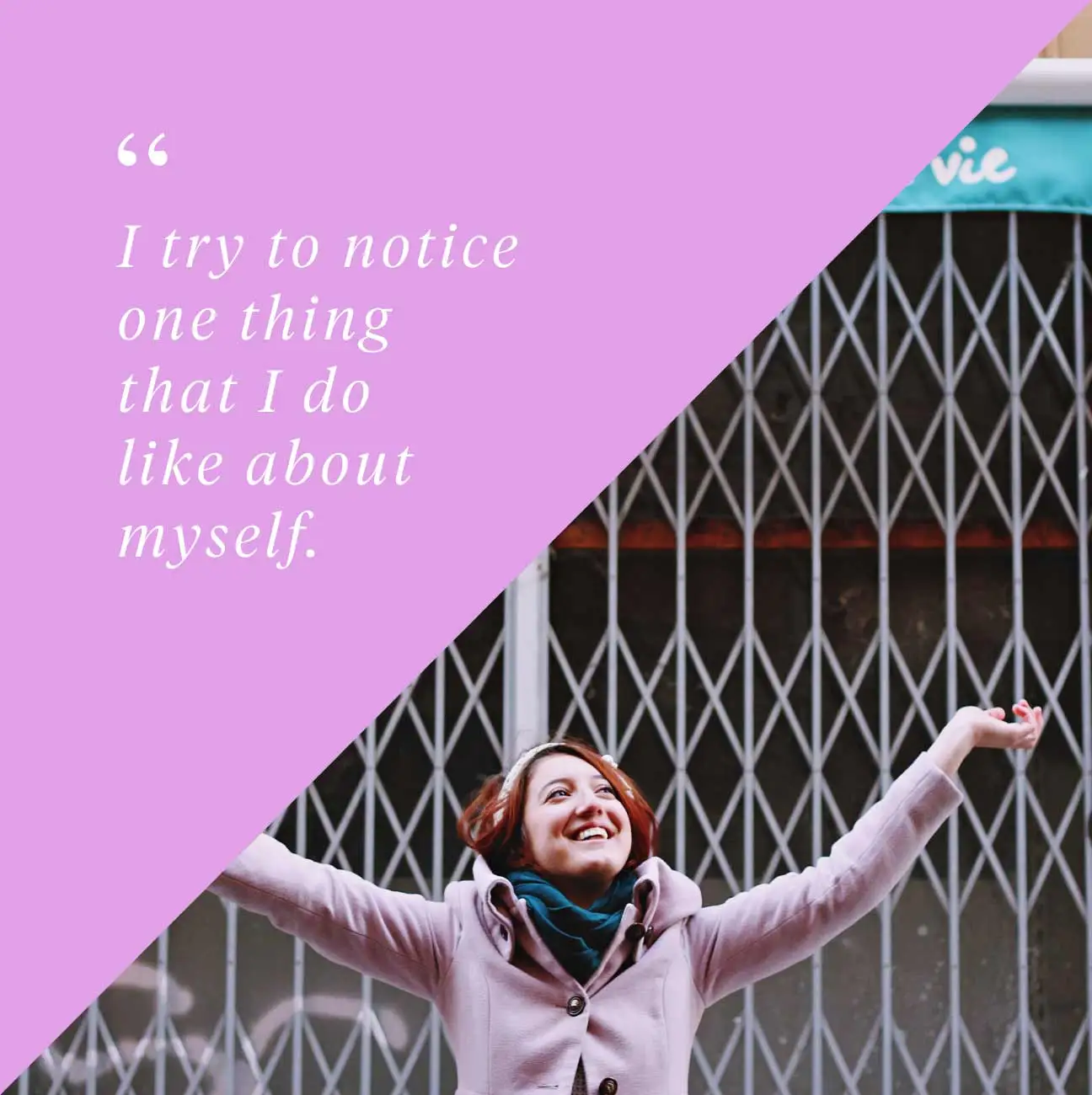
One symptom of my depression is negative thinking. I struggle with self-criticism, which definitely translates into how I view my physical appearance. My instinct when I catch my reflection in a mirror is to put myself down. Have you gained more weight? You look disgusting. You are never going to get in shape. I want to treat myself with more kindness, so I am making a concerted effort to change these thoughts. When my harsh inner monologue kicks in, I tell myself that it’s OK to be frustrated about my appearance. I acknowledge my feelings as real and valid without turning them inward. Then I try to notice one thing that I do like about myself, whether it’s a small detail of how I look, or something compassionate I did that day. While it doesn’t always feel natural to look for something positive, the good news is I can tell that a shift is beginning to take place.
5. I pay attention to how I talk to myself
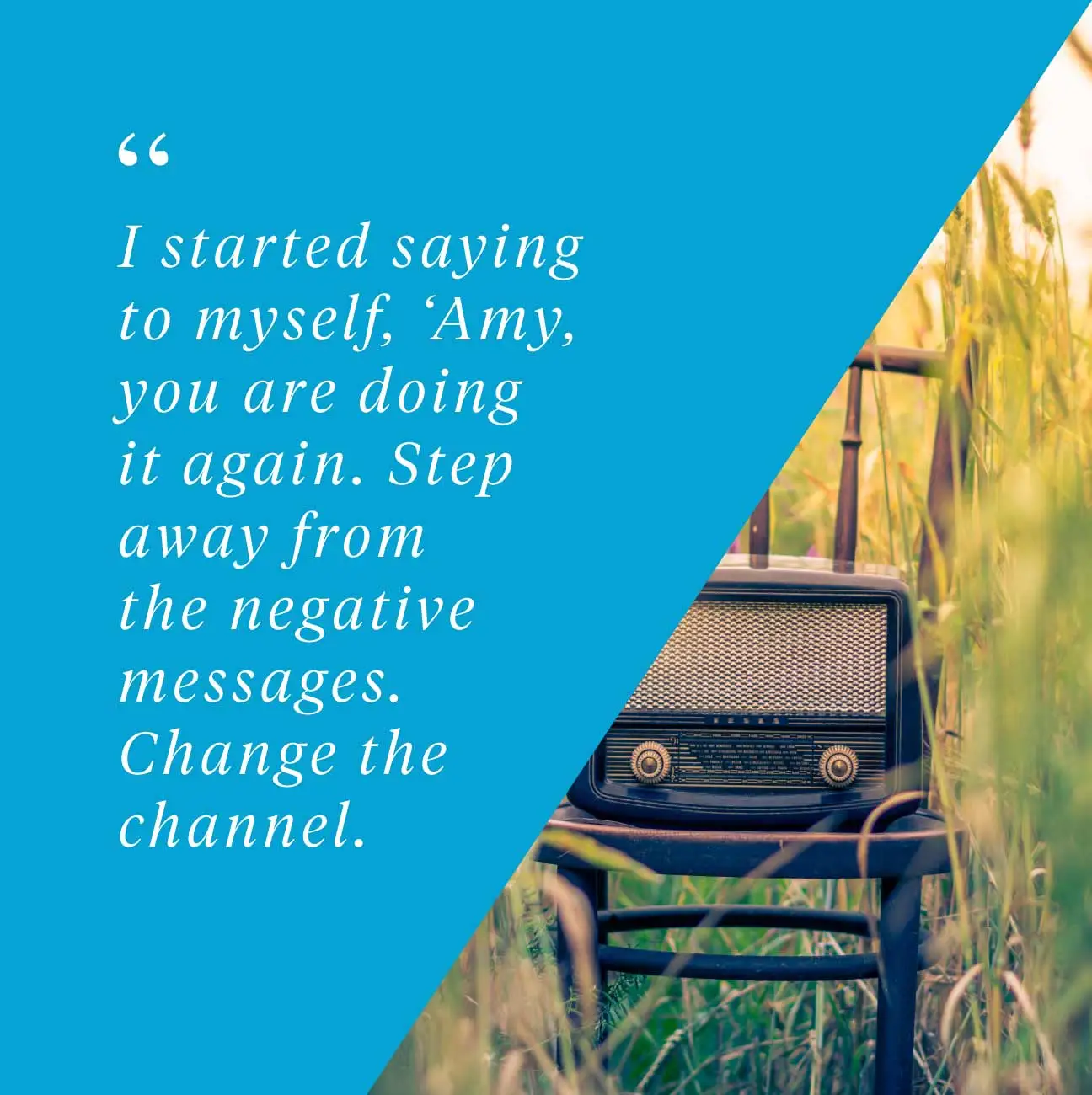
A therapist once referred to the “negative tape” playing in my head, and she couldn’t have described it better. For years I didn’t notice how much guilt, shame, and cognitive distortions impacted how I talked to myself. Throughout the day I had a running inner monologue that told me I wasn’t lovable, didn’t do enough, and should have tried harder — regardless of how well I had done or how much I was loved. The first step in changing how I talk to myself was becoming aware. I began to notice how often I put myself down, or scrutinized my behavior. Once I even kept a tally of how many times I’d criticized myself in one day. I started saying to myself, Amy, you are doing it again. Step away from the negative messages. Change the channel. I began to realize that I had a choice: I could tell myself something new. I now make a concerted effort to replace the negative messages with affirming statements. I tell myself that I did a good job, that I am a good friend, and — most importantly — that I love who I am.
6. I created a ‘mindfulness moment’
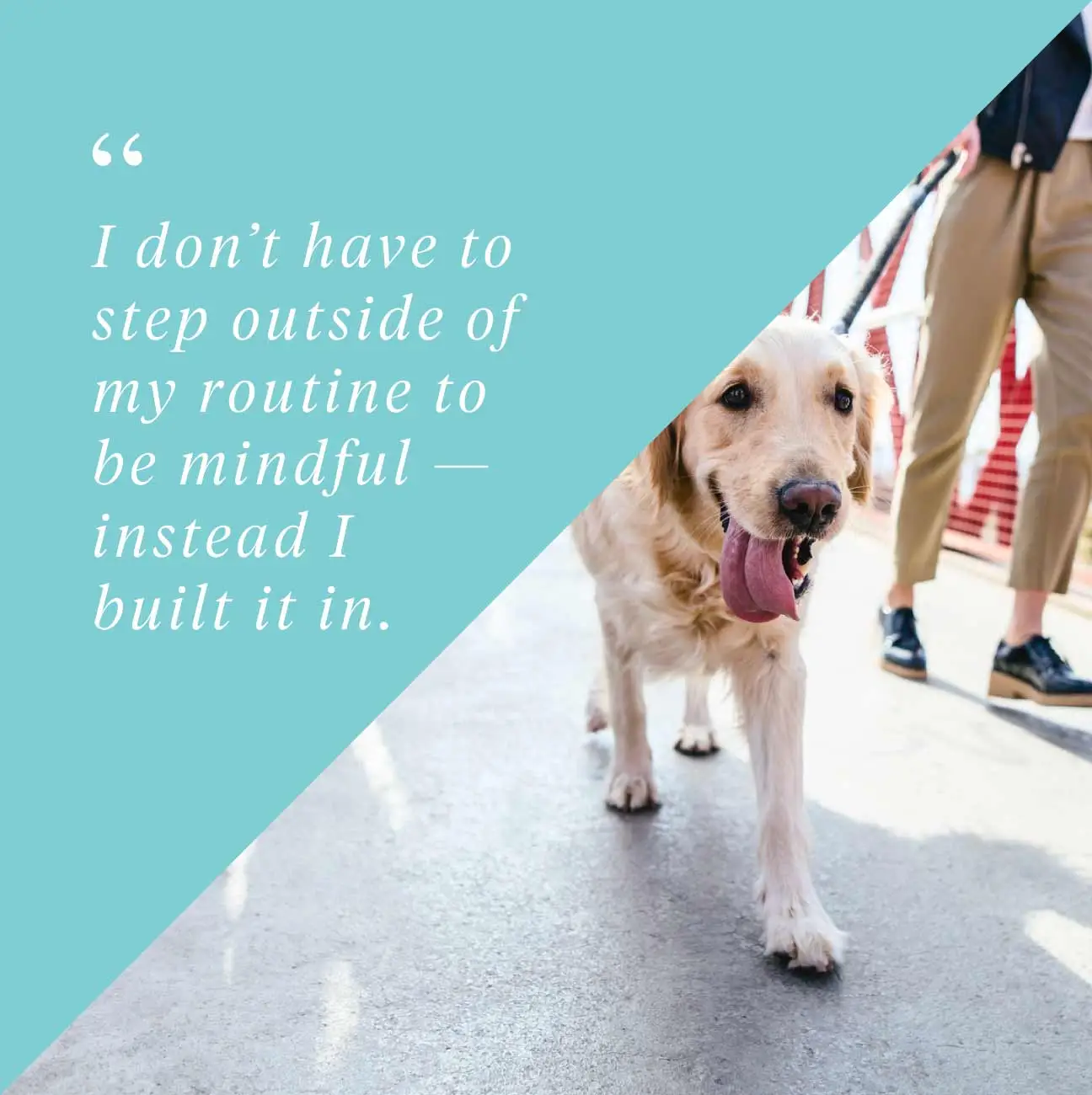
When I was very sick with depression and anxiety, mindfulness helped me create a space where I could both acknowledge the pain I was in and also find peace and stability in the present. I found it helpful to create a “mindfulness moment” to repeat every day. The “moment” I created was walking my dog, Winston. When I would put on his leash and start to walk him down the block, I focused intently on what I was experiencing: the chirping of the birds, the sunlight filtering through the trees, the temperature of the air. For 10 minutes, I was immersed in the present moment, and I found that the walk helped me reconnect with my inner strength. I felt a sense of peace by noticing the natural beauty around me. Even today I continue to practice this “mindfulness moment.” In fact, I look forward to it every morning. I don’t have to step outside of my routine to be mindful, instead I built it in.
7. I take personal ‘time-outs’ when I need them
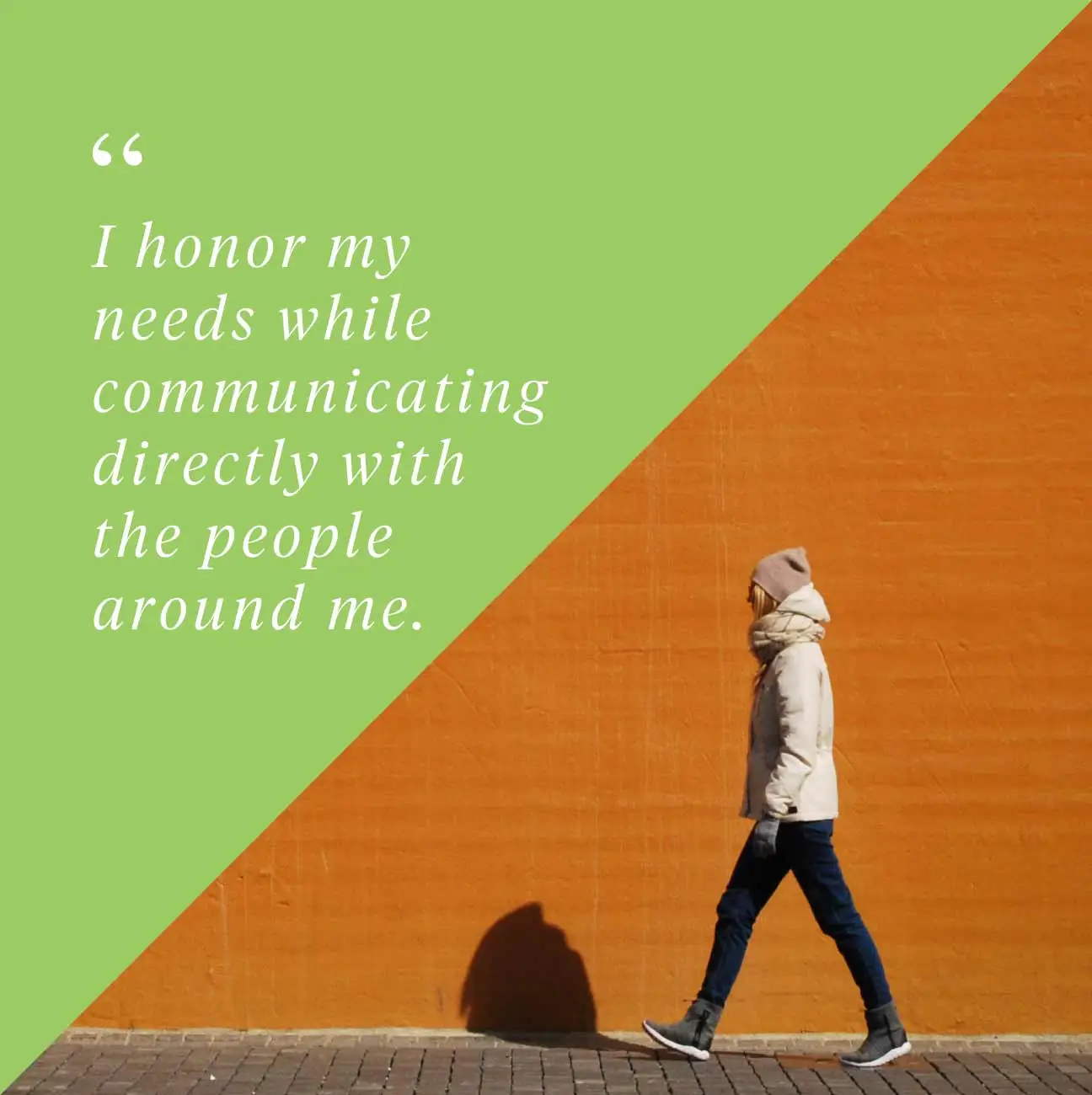
Time-outs aren’t just for kids. I’ve found that I can benefit from the same concept (minus sitting on the bottom step at my mom’s house). When I feel my anxiety or depression escalating, a tremendous pressure builds up inside of me. For a long time, I would stuff that feeling down and ignore it, hoping it would go away. Today, I practice self-care by acknowledging my symptoms and taking a time-out for myself. Sometimes, I need a short break, like a brief walk outside or deep breathing in a private room. If I’m with a colleague, I say something simple like, “I need to take a quick break for myself and will be right back in five or 10 minutes.” I honor my needs while communicating directly with the people around me. Taking these quick breaks prevents the pressure of my mental illness from building, and helps me determine what, if any, next steps I need to take to ensure my well-being.
8. I give myself 10 minutes of fun
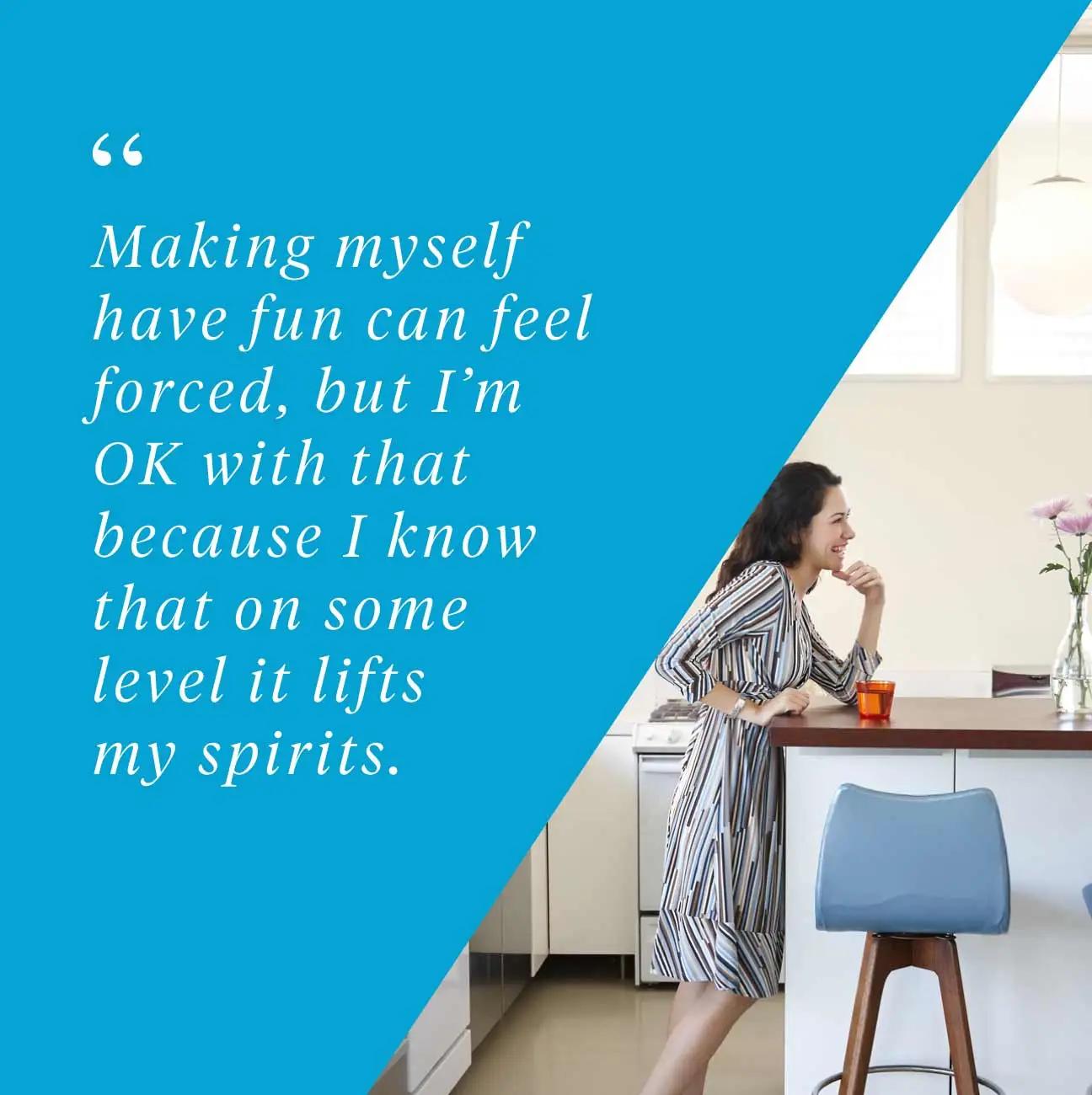
Depression can be, well, depressing. I feel heavy and weighed down, and having fun is usually the last thing on my mind. When I’m feeling healthy, having fun is easy — I don’t have to build it into my schedule. But when I’m feeling depressed, I make a concerted effort to do one small fun thing every day. It doesn’t have to be skipping through a field of daisies, just a moment that brings me a little bit of pleasure. Sometimes, I put on my favorite music and dance in the kitchen while cooking dinner. I bought a grownup coloring book and love to fill in the pictures while I’m watching a movie. If my energy is especially low, lighting a nice candle and drinking a mug of hot tea feels comforting. Making myself have fun can feel forced, but I’m OK with that because I know that on some level it lifts my spirits and keeps me moving forward.
9. I developed a relaxing bedtime routine
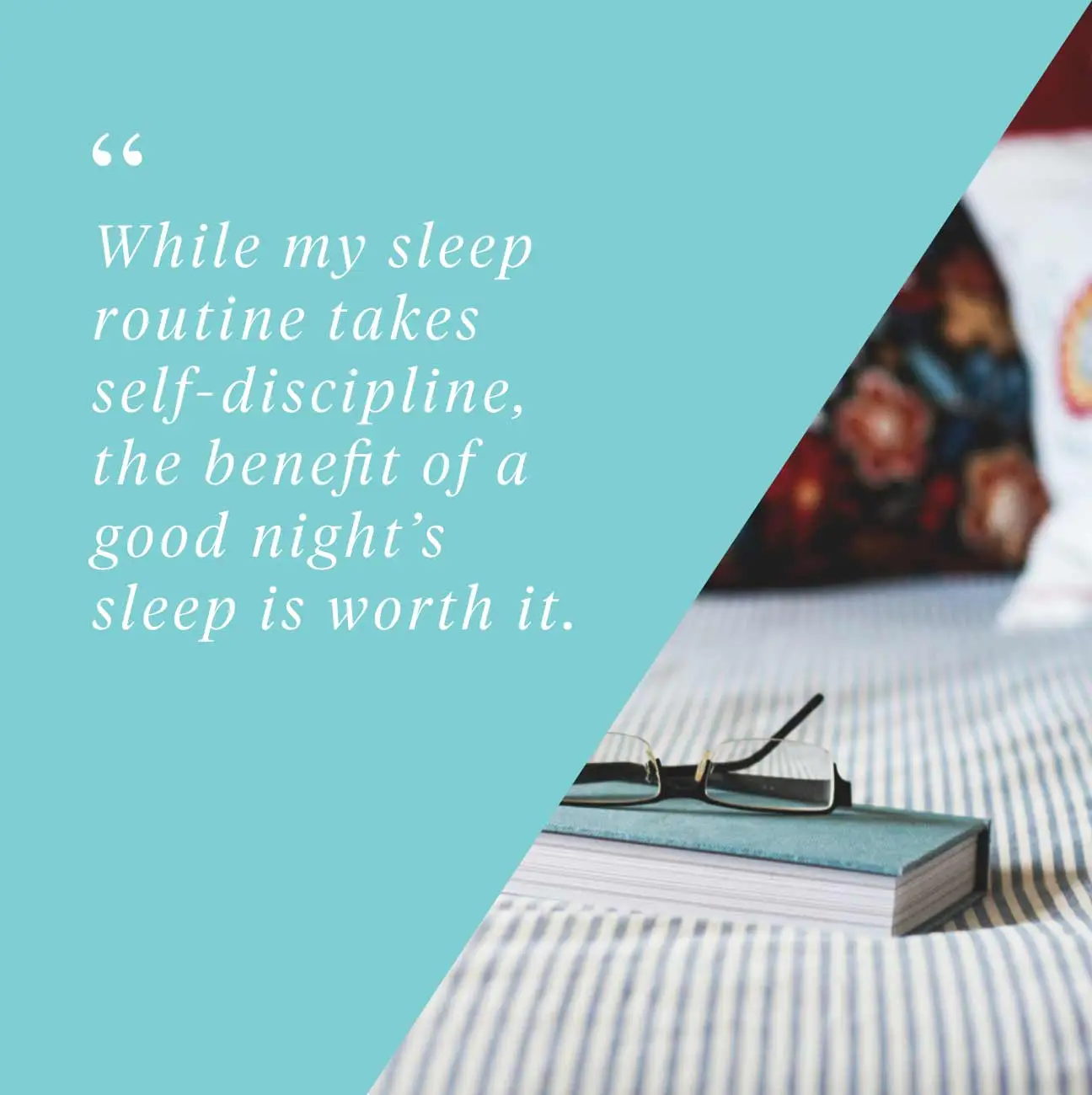
I’ve struggled with sleeping for years. Going without sleep ratchets up my stress level and strains my emotional health. Because I have trouble falling asleep, I stop doing any stressful or work-related activities by 8:00 pm. I try not to have social engagements on work nights because it’s hard to wind down afterward. Sometimes, I do a quick bedtime yoga routine (I’ve found some great free videos online). Next, I prepare myself a hot cup of herbal tea and head upstairs to bed. I give myself a good 30 minutes to read before the time I would like to fall asleep, and I avoid getting on the computer or looking at email. If my thoughts are racing, I write down what I am thinking about in a notebook. When I’m ready to snooze I flip on my noise machine, which helps me fall asleep. While this routine takes self-discipline, the benefit of a good night’s sleep is worth it.
10. I engage all of my senses
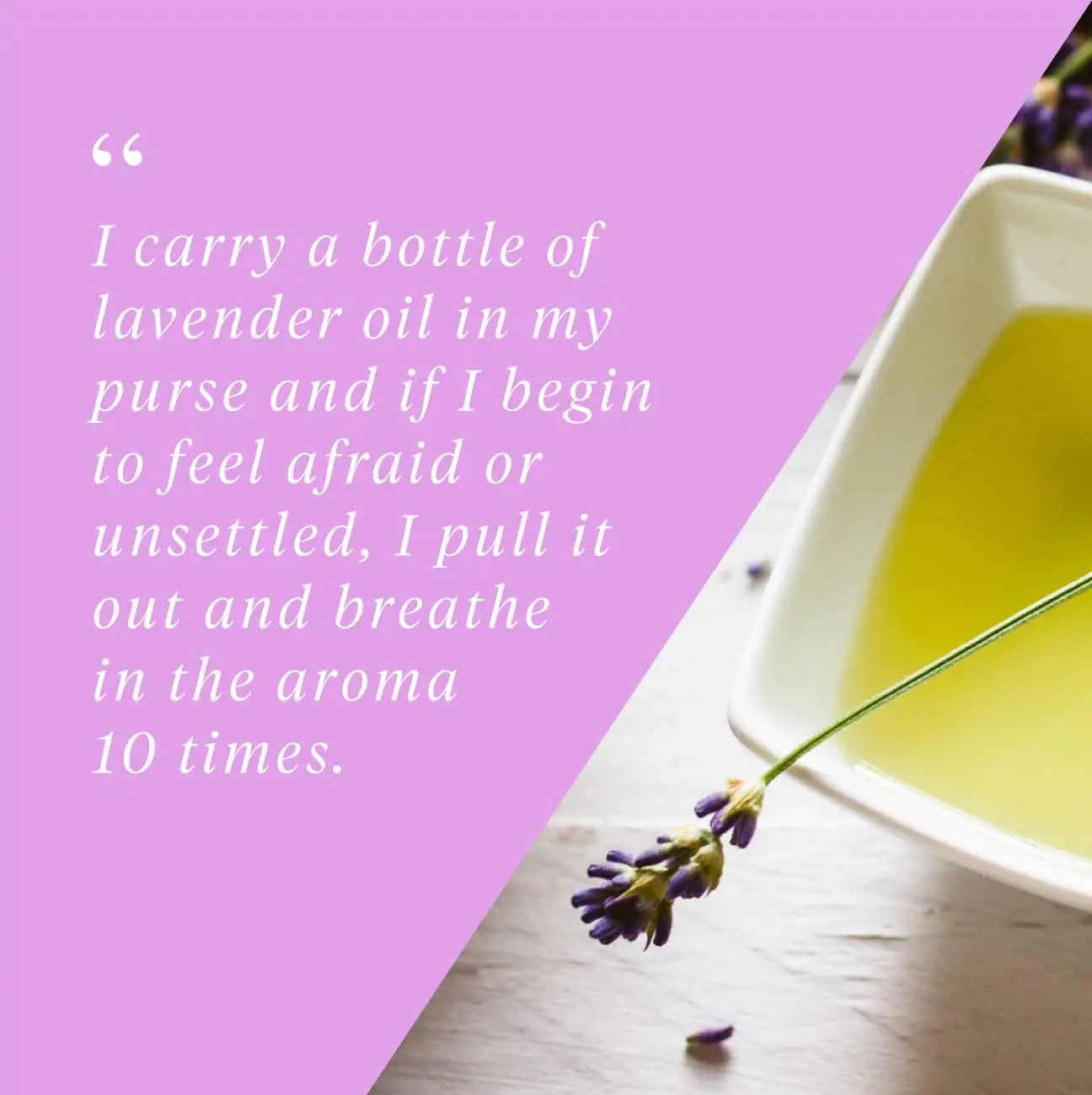
I tend to get trapped in my own thoughts and feelings. In therapy, I’ve learned how to use my senses of sight, touch, taste, smell, and sound to shift my focus. Each of my five senses is important and engages different parts of my brain, and affects my mood. The simple act of feeding my senses brings me back into the present moment, making me feel more safe and grounded. I look outside — and really look — at the beauty of the trees and sky. I listen to music, which can soothe or energize me, depending on what I need to hear. I try new recipes so that I can experience different flavors and engage my sense of taste. I use touch to calm down by petting my dog. When I wash the dishes, I focus on how the water and soap feel on my hands. I love using essential oils to cope with anxiety — I carry a bottle of lavender oil in my purse and if I begin to feel afraid or unsettled, I pull it out and breathe in the aroma 10 times.
Developing these 10 acts of self-care has been a journey, one that continues today. The challenging (and fun) aspect of loving ourselves is that it’s an individual process. I had to explore what works best for me, and I continue to learn — in therapy, from friends, and in books and online — about new ways that I can take good care of myself. Each of these tools remind me that I can cope with mental illness and that I always have a choice of how to handle my symptoms. Every time I choose self-care I am reconnected with two important truths: that I deserve to love myself and that I, indeed, am worth it.
Amy Marlow is living with major depression and generalized anxiety disorder, and is the author of Blue Light Blue, which was named one of our Best Depression Blogs. Follow her on Twitter at @_bluelightblue_.



